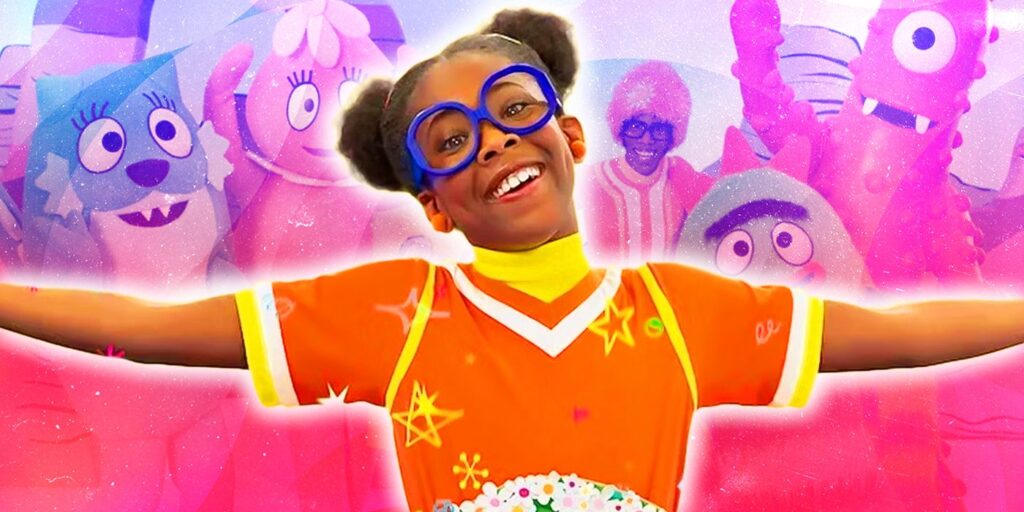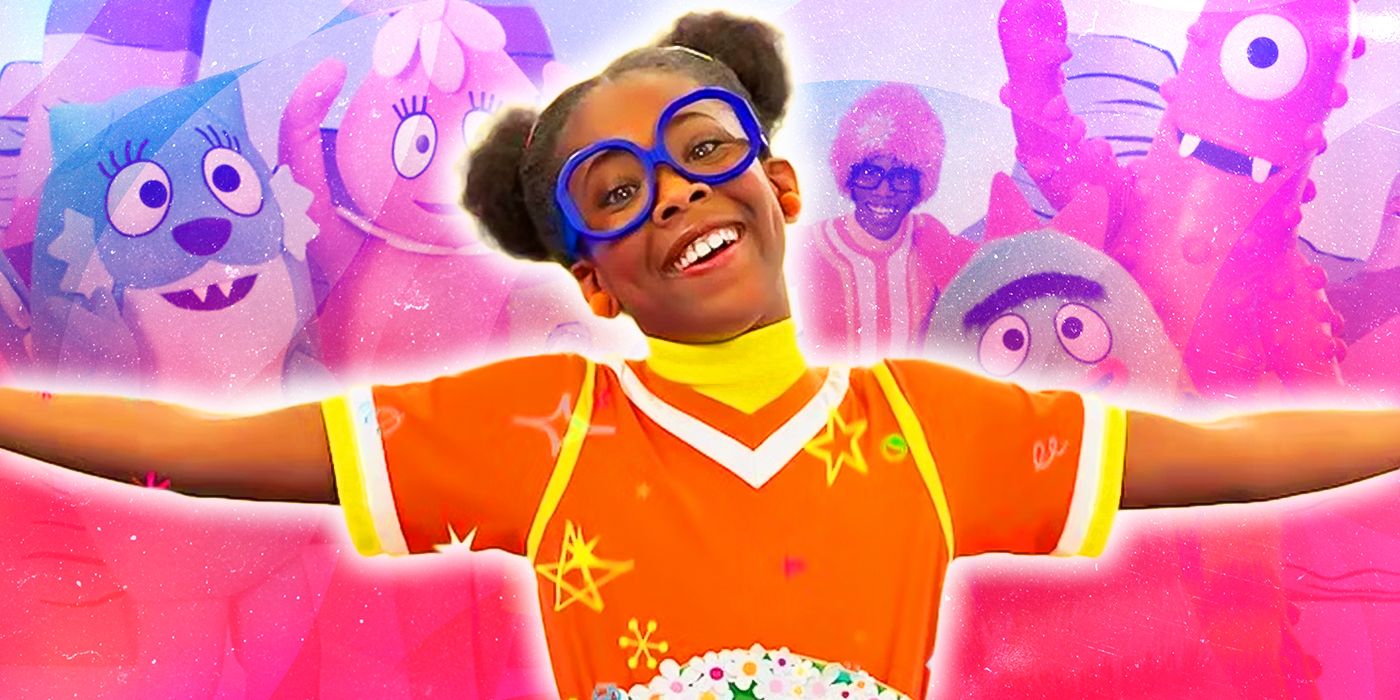
The Enduring Appeal of Yo Gabba Gabba! and the Color Pink: A Cultural Phenomenon
Yo Gabba Gabba!, the vibrant and musically-driven children’s television show, captured the hearts of kids and parents alike with its infectious energy and positive messages. While the show itself is a kaleidoscope of colors, the association with the color pink, whether through characters, set design, or merchandise, adds another layer to its appeal. This article explores the cultural significance of Yo Gabba Gabba! and its connection to the color pink, examining why this combination resonates so strongly with audiences and remains a relevant force in children’s entertainment.
The Magic of Yo Gabba Gabba!
Yo Gabba Gabba!, which premiered in 2007, quickly distinguished itself from other children’s programming. Created by Christian Jacobs and Scott Schultz, the show features a mix of live-action and animation, catchy original songs, and a diverse cast of characters. The premise is simple: DJ Lance Rock, a de facto host, introduces viewers to a world of friendship, learning, and fun alongside his five Gabba Land friends: Muno (a red cyclops), Foofa (a pink flower bubble), Brobee (a small, green monster), Toodee (a blue cat-dragon), and Plex (a yellow robot). Each episode revolves around a specific theme, such as friendship, eating healthy, or trying new things, presented in an engaging and accessible way for young children.
One of the key elements that set Yo Gabba Gabba! apart was its commitment to high-quality music. The show featured original songs written by the creators and performed by the Gabba Land characters. It also included guest appearances from popular musicians across various genres, including The Shins, MGMT, and Jack Black. This musical diversity not only entertained children but also appealed to their parents, making Yo Gabba Gabba! a show that the whole family could enjoy together.
The Power of Pink: Associations and Symbolism
The color pink holds a complex and often contradictory set of associations. In Western cultures, it is frequently associated with femininity, sweetness, and innocence. These associations stem from the historical use of pink as a lighter shade of red, which was once considered a masculine color. However, as fashion and cultural norms evolved, pink became increasingly linked to girls and women, often used in clothing, toys, and decorations marketed towards them. While pink can be seen as a symbol of gentleness and playfulness, it can also be perceived as frivolous or weak, depending on the context.
In the context of Yo Gabba Gabba!, the use of pink, most notably through the character of Foofa, contributes to the show’s overall sense of whimsy and fun. Foofa, the cheerful and affectionate flower bubble, embodies the positive aspects of pink, such as kindness, creativity, and joy. Her pink hue reinforces her gentle nature and makes her visually appealing to young viewers. By presenting a pink character who is strong, independent, and supportive, Yo Gabba Gabba! challenges traditional stereotypes and promotes a more nuanced understanding of gender roles.
Yo Gabba Gabba!, Pink, and Target Audience
The show’s vibrant color palette, including the prominent use of pink, is strategically designed to capture the attention of its target audience: preschool-aged children. Young children are naturally drawn to bright and bold colors, which stimulate their visual senses and help them distinguish between objects. Pink, in particular, has been shown to evoke feelings of happiness and excitement in children. By incorporating pink into the show’s design, Yo Gabba Gabba! creates a visually stimulating and engaging environment that keeps children entertained and focused.
Furthermore, the association of pink with positive emotions and experiences can help children develop a positive association with the show itself. When children see Foofa, the pink flower bubble, they are likely to associate her with feelings of happiness, friendship, and fun. This positive association can then extend to the show as a whole, making Yo Gabba Gabba! a source of comfort and enjoyment for young viewers. The use of pink is therefore not just an aesthetic choice but a deliberate strategy to connect with the show’s target audience on an emotional level.
The Enduring Legacy
Despite ending its original run in 2015, Yo Gabba Gabba! continues to resonate with audiences through reruns, streaming services, and merchandise. The show’s enduring appeal can be attributed to its timeless themes, catchy music, and memorable characters. The use of pink, particularly through Foofa, has played a significant role in shaping the show’s identity and creating a lasting impression on viewers. The show’s influence can be seen in other children’s programs that have adopted similar approaches to music, animation, and character design.
The legacy of Yo Gabba Gabba! extends beyond entertainment. The show has been praised for its educational content, which covers a wide range of topics, including healthy eating, exercise, and emotional intelligence. By presenting these topics in an engaging and accessible way, Yo Gabba Gabba! has helped children develop important life skills and build a foundation for future learning. The show’s positive messages about friendship, acceptance, and creativity continue to inspire children and adults alike.
Pink Merchandise and Cultural Impact
The popularity of Yo Gabba Gabba! led to a wide range of merchandise, including toys, clothing, and home goods, many of which featured the color pink prominently. Foofa plush toys, pink t-shirts, and pink bedding were particularly popular among young fans. The availability of pink merchandise further reinforced the association between Yo Gabba Gabba! and the color, solidifying its place in popular culture.
The cultural impact of Yo Gabba Gabba! is undeniable. The show has influenced fashion trends, inspired artwork, and even been referenced in other television programs and films. The characters, including Foofa, have become iconic figures, recognized and loved by children and adults around the world. The show’s innovative approach to children’s entertainment has paved the way for new and creative programming, demonstrating the power of music, animation, and positive messages to engage and inspire young audiences.
Addressing Criticisms and Evolving Perceptions of Pink
While Yo Gabba Gabba! and its use of pink have been largely praised, it’s important to acknowledge some criticisms surrounding the color’s association with gender stereotypes. Some argue that the overemphasis on pink for girls and blue for boys reinforces outdated and harmful ideas about gender roles. However, Yo Gabba Gabba! attempts to subvert these stereotypes by presenting a diverse cast of characters who defy traditional gender norms. Foofa, while pink, is portrayed as a strong, independent, and intelligent character, challenging the notion that pink is solely associated with weakness or passivity.
Furthermore, perceptions of pink are constantly evolving. In recent years, there has been a growing movement to reclaim pink as a color of empowerment and self-expression. Many women are embracing pink as a symbol of strength, confidence, and individuality. This shift in perception is reflected in fashion, art, and popular culture, where pink is increasingly being used in unexpected and unconventional ways. Yo Gabba Gabba!, with its playful and inclusive approach to color, contributes to this evolving understanding of pink and its potential to represent a wide range of identities and experiences.
Conclusion: The Enduring Appeal of Yo Gabba Gabba! and Pink
Yo Gabba Gabba!‘s success lies in its ability to connect with children on multiple levels. Its catchy music, vibrant visuals, and positive messages create an engaging and entertaining experience. The use of pink, particularly through the character of Foofa, adds another layer to the show’s appeal, contributing to its overall sense of whimsy and fun. While the association of pink with gender stereotypes has been a subject of debate, Yo Gabba Gabba! attempts to challenge these stereotypes by presenting a pink character who is strong, independent, and intelligent.
The enduring legacy of Yo Gabba Gabba! is a testament to its innovative approach to children’s entertainment. The show’s influence can be seen in other programs that have adopted similar approaches to music, animation, and character design. By embracing creativity, diversity, and positive values, Yo Gabba Gabba! has made a lasting impact on children and families around the world. The show’s association with the color pink, through the character of Foofa, remains a significant aspect of its identity and contributes to its enduring appeal. The show is a cultural phenomenon, and the color pink is simply part of the reason why.
[See also: The Impact of Children’s Television on Early Development]
[See also: The Psychology of Color in Marketing and Branding]
[See also: Top 10 Educational Children’s Shows]

